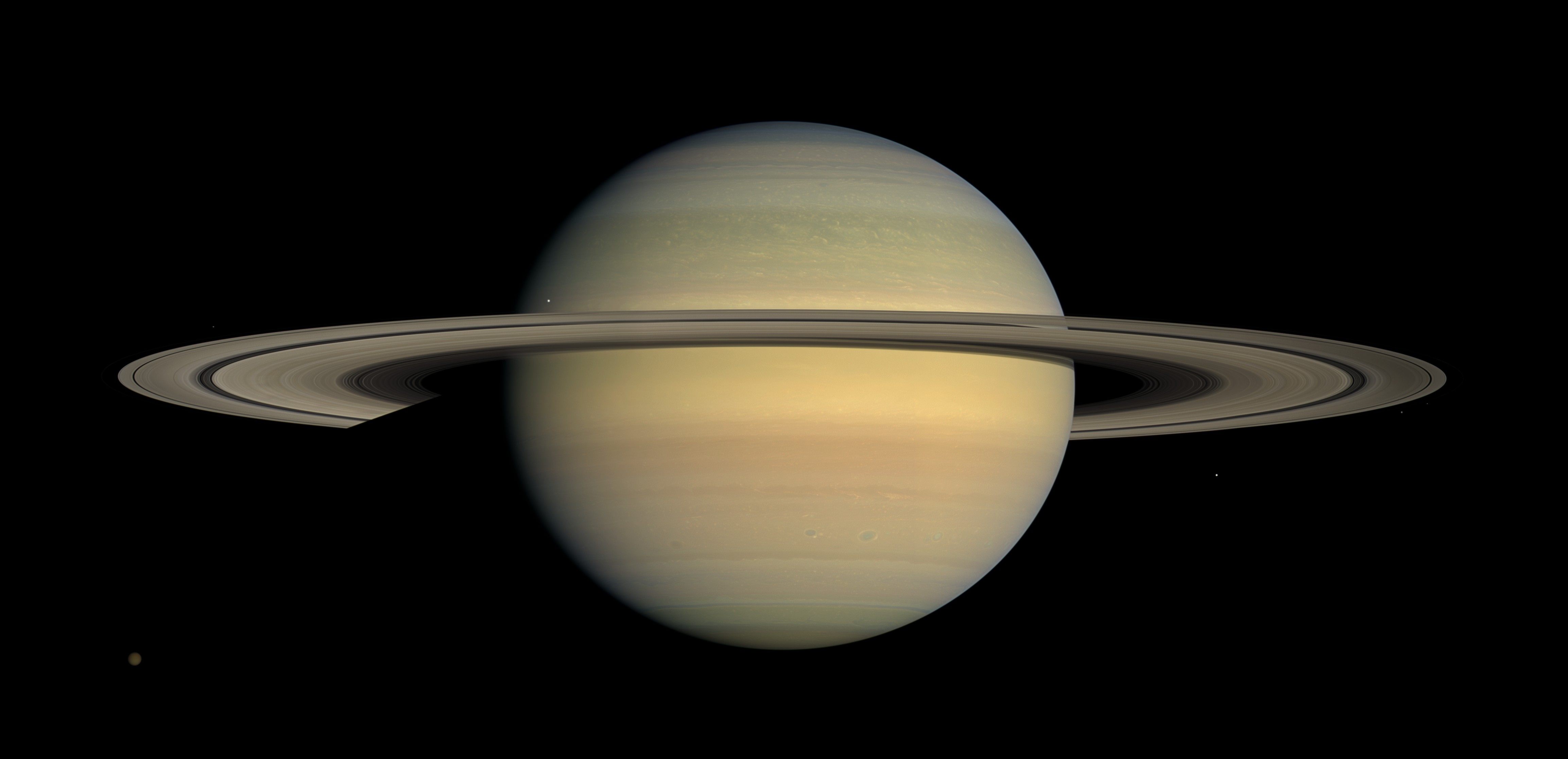Seeing Earth From Between Saturn’s Rings, Nearly a Billion Miles Away
This is what it feels like to feel small.

The Cassini Orbiter is about 5,000 pounds (minus its fuel, which is all gone, and the Huygens probe it dropped off on Titan in 2004) of science that’s been orbiting Saturn for nearly 13 years. It is, by any objective take, a vanishingly small speck in the vastness of space, and one of the subtle feats of its 12 sensors—including an ultraviolet imaging spectrograph, plasma spectrometer, and cosmic dust analyzer—is reminding us occasionally that the Earth is, too. Take one of the latest composite images that the probe has produced, of the Earth between Saturn’s icy rings, from nearly a billion miles away. Not that you’d be able to tell, but that’s the Southern Atlantic Ocean there, and the faint dot on the left is the moon.

Cassini’s 20-year journey of scientific discovery and cooperation is almost over and it’s currently in its final act, orbiting lower and lower through Saturn’s rings. This September 15 it will go out in a tiny blaze of glory in Saturn’s atmosphere. The probe will continue beaming data back right up until that moment, and its last word—traveling at the speed of light—will arrive on Earth over an hour after it’s gone.

















Follow us on Twitter to get the latest on the world's hidden wonders.
Like us on Facebook to get the latest on the world's hidden wonders.
Follow us on Twitter Like us on Facebook